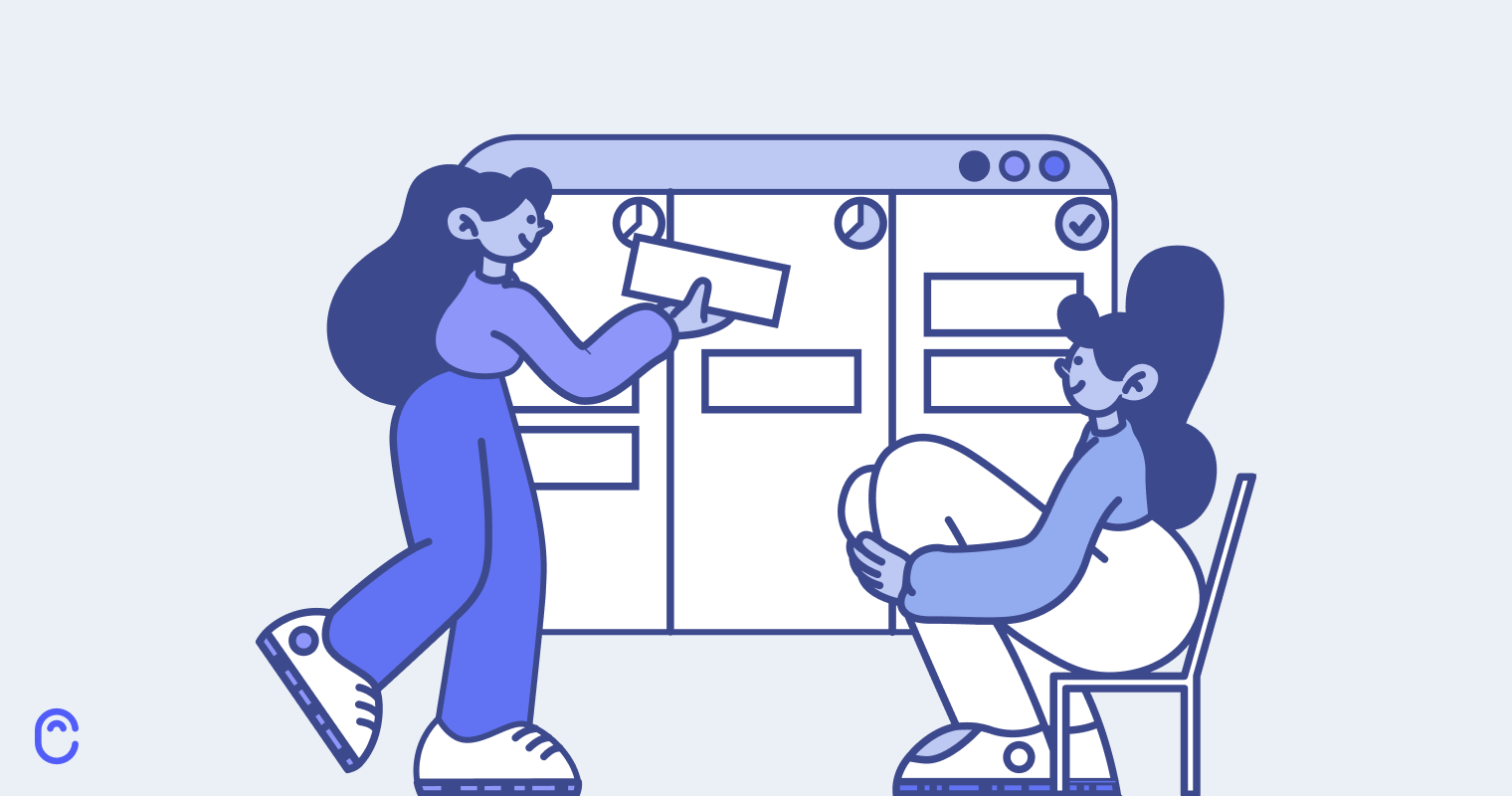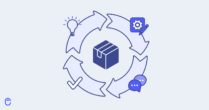Choosing what to work on as product managers is really important. If we pick wrong, we might spend time on things people don’t want.
Doing this without help is tough. It takes a lot of time, and it’s easy to make mistakes. A product manager may end up picking the features we want to build versus what users need.
That’s why prioritization tools are so important. They help us clearly see which product features deserve the most attention.
What’s feature prioritization? It’s the process of deciding which tasks or updates to work on first. Prioritization helps teams focus on what’s most important or what can make a big difference for users. This is crucial because there’s always more we could do than we have time or resources for.
Let’s take a look at how prioritization and dedicated product prioritization tools make choosing what to work on more straightforward.
Why do you need to prioritize features?
How can you focus your product team? Agree on what to build next. That’s what prioritization does. When you use a proven prioritization method, you will:
- Never wonder what to build next. Prioritizing helps your team understand which product feature will have the most significant impact. This clarity guides your product development efforts. You’ll know you’re working on the most valuable addition to your product.
- Never build features no one uses. It’s easy to think every new product idea is good, but users won’t use or value every feature you build. Prioritizing helps you focus on the features that correspond with customer needs. This reduces the risk of wasting time and resources on unwanted functionalities.
- Never get lost in the sea of ideas. Managing a backlog of feature requests and ideas can be overwhelming without prioritization. Prioritization helps you sift through these ideas. Then, you can highlight what’s urgent and essential to keep your team aligned.
4. Always allocate appropriate time & resources. Resources are always limited, whether it’s time, team members, or budget. Prioritizing ensures you allocate these precious resources effectively. You’ll end up focusing on developing features that offer the best return on investment.
Manual prioritization & its challenges
Doing things the old-fashioned way — manually prioritizing features — comes with some challenges. Many teams start here, and they often run into hurdles as their product and amount of feedback grow.
“We started getting too much feedback and didn’t have a good way to catalog and triage it. We now get hundreds of pieces of feedback a week. We tried everything from spreadsheets to long Slack threads.”
Evan Kirkham, co-founder of Outlier
Product teams often use well-known methods like the Kano Model, RICE, MoSCoW method, and Impact-effort matrix. We put together a comprehensive list of all the most popular prioritization frameworks here.
These frameworks are great, but applying them manually to every product decision can be a heavy lift. You’ll feel it even more as your product scales.
We also have this prioritization template you can start with. It’s a great solution if you’re just starting out with prioritization.
Here’s what makes manual prioritization tough.
Time-consuming
Manual prioritization requires a lot of discussions, meetings, and back-and-forth between team members. Sorting through feedback, comparing feature requests, and debating their merits can eat up valuable time. The time you could spend building the product.
Bias
We’re all human, and our preferences or experiences can influence our decisions. When prioritizing manually, it’s easy for personal bias to creep in. This might lead to choosing features based on what we like rather than what’s most valuable to the users.
Hard with a large volume of feedback
As your user base grows, so does the amount of feedback and feature requests. Manually sorting through this feedback becomes increasingly challenging. Furthermore, important customer insight might get lost in the noise.
“Keeping track of all of them was getting messy. Now, we use Canny as one source of truth. And it’s much easier to select which things we need to build and focus on them.”
Ida Ström, senior product designer at Mercury
Hard to scale
What works for a small startup won’t necessarily work for a larger organization. As your team and product grow, the manual processes that once served you well can become bottlenecks. They slow down decision-making and make it harder to stay agile.
Hard to close the feedback loop
One of the most essential parts of prioritization is letting users know you’re listening to their feedback. Manual methods make it challenging to track which feedback led to which feature decisions. This makes it harder to close the loop and communicate how their input has shaped the product to your users.
For all those reasons, we recommend using a dedicated prioritization tool. We’ll discuss those next.
Product prioritization tools
Product prioritization tools help determine which potential feature, enhancement, or task to focus on first. These tools often come with frameworks and features that streamline the prioritization process. It makes the process more structured and data-driven.
There are lots of benefits, including:
- Time-saving. Automating and streamlining the prioritization process saves a lot of time. Your teams can quickly assess their options and make informed decisions. No lengthy discussions and debates.
- Data-driven decisions. You can base decisions on data: user feedback, market trends, and product usage metrics. This minimizes bias and ensures that decisions align with what’s genuinely best for the product and its users.
- Team alignment. Prioritization tools help keep everyone on the same page. Make the criteria and reasons for prioritization transparent. This way, all team members will understand why certain features are prioritized over others. They can also see what’s happening and participate.
- Automation. The prioritization process involves many repetitive tasks. Sorting feedback, scoring features against specific criteria, and more. You can automate many of those to save time and reduce the chance of human error.
- Visualization of priorities. These tools often visually represent priorities: charts, graphs, and/or boards. These visualizations make it easier to understand the landscape of potential work. You can see which items are most critical and help your team effectively focus their efforts.
- Roadmaps. You can take that visualization a step further with a roadmap. It helps to visualize the work and plan better.
The best product prioritization tools
Now that you’re curious about prioritization tools, let’s explore the best ones.
Canny
Pros:
Canny is specifically designed to collect and organize user feedback. It’s ideal for teams that want to base their prioritization decisions on direct user input. Canny helps you capture, manage, and analyze feedback to identify the features most desired by your users.
It also connects to important data sources like your CRM and support channels. This lets you include important data in your prioritization calculation. For example, you could look at customers’ ARR or potential revenue when prioritizing.
All feedback is important, but who is leaving feedback is more important.
Canny lets you easily create a prioritization formula that automatically scores all your feature requests. By looking at the items that score highest, you’ll know what to work on.
You can also separate your users by segments. This way, you’ll know which segment is requesting which features. It’ll be easier to understand what paying and/or high-value customers need.
After prioritizing, you’ll have a clear roadmap. Working on multiple projects? You can have multiple roadmaps to keep things clean and organized!
Canny also helps with closing the feedback loop. It helps to let users know their input is valued and considered in the development process.
Update: Canny introduced Autopilot – a suite of AI-powered time-saving features. Autopilot detects and extracts feedback from support and sales conversations. Then, it deduplicates that feedback, replies to users, and summarizes comment threads.
Cons:
Canny is not a project management tool. It can still help you organize and delegate tasks. But other dedicated project management tools have more advanced functionality. That’s why Canny integrates with those tools – Asana, ClickUp, Jira, Linear, GitHub, and Azure DevOps. You can push tasks directly to those tools and continue working on them there.
Price: free; paid plains start at $79/month (includes 3 admins)
Jira
Pros:
Jira is a powerhouse in agile project management. But it’s not just for tracking bugs and issues. It’s also great for prioritizing product backlogs. You can create custom workflows, use various scoring methods for prioritization, and integrate with other tools. It’s especially suited for teams that follow Scrum or Kanban methodologies.
Cons:
Jira is not a dedicated feedback tool. That’s why it’s not the best at handing feedback management. Importing customer data is a bit more complicated in Jira.
Price: free; paid plains start at $81.50/month per user
Trello
Pros:
Trello is known for its simplicity and visual appeal. It uses boards, lists, and cards to help teams organize and prioritize their work. It’s very flexible, allowing teams to set up their boards in whatever way works best for them.
Trello is great for smaller teams or projects that need a straightforward tool for managing tasks and priorities.
Cons:
Trello offers a limited ability for calculation prioritization. It requires more manual work overall.
Price: free; paid plains start at $6/user/month
Asana
Pros:
Asana offers a blend of features for task management, project tracking, and collaboration. It provides multiple views (lists, boards, calendars, and timelines) for organizing work and priorities. Asana’s strength is its ability to break down big goals into manageable tasks. This makes it easier for teams to stay focused on their top priorities.
Cons:
Asana’s focused on task management and collaboration. This means it might not offer the depth of prioritization features that dedicated feedback or roadmap tools provide. So it’s less ideal for deep strategic planning.
Price: free; paid plains start at $11/user/month
Aha! Roadmaps
Pros:
Aha! Roadmaps help product managers plan their strategies. You can also prioritize features that align with your product’s vision and business objectives. With Aha! you can set goals, define initiatives, and build a visual product roadmap. It’s best for teams that need a high-level overview of their product’s direction and priorities.
Cons:
Aha! Roadmaps offer an extensive feature set for detailed planning and roadmapping. As a result, it’s more complex and less intuitive for some teams.
The price point might also be an issue for teams with smaller budgets.
Price: start at $59/user/month
It’s always hard to choose the best tool for you. Here’s a comparison table of different tools to simplify this.
| Feature | Canny | Jira | Trello | Asana | Aha! Roadmaps |
| Primary focus | Collecting, organizing and prioritizing user feedback | Agile project management | Simple and visual task management | Task management, project tracking, collaboration | Strategy planning and roadmapping |
| Price | Free; paid plans start at $79/month with 3 admins | Free; paid plans start at $81.50/user /month | Free; paid plans start at $6/user/month | Free; paid plans start at $11/user/month | Starts at $59/user/month |
| Best for | Teams prioritizing based on user input | Teams following Scrum or Kanban | Smaller teams or straightforward projects | Teams breaking down big goals into tasks | High-level product strategy and roadmap visualization |
| Strengths | Prioritizing based on user feedback and customer data, closing the feedback loop. | Custom workflows, prioritization scoring, integrations | Flexibility, intuitive use | Variety of organizational views, focus on priorities | Comprehensive tools for setting goals and defining initiatives |
| Weaknesses | Advanced project management | Customer data imports, feedback management | Limited ability for calculation prioritization, more manual work | Limited prioritization capabilities | Complexity, price |
Please note: some tools (like Aha! Roadmaps) sell various features as separate products. For example, Aha! Ideas that focuses on feedback is a separate tool.
If you’re looking for a tool to help you manage the entire product lifecycle, try Canny.
Conclusion: why prioritize?
Prioritizing what to work on next isn’t just a routine task. It’s the cornerstone of effective product strategy.
If you want to to ensure every feature you develop is in demand, you should effectively prioritize. And there are great product prioritization tools out there that can help.
When choosing a tool, look for one that combines multiple product management functions. For example, feedback management, prioritization, roadmapping, and changelog. Then you’ll be able to manage it all in one place. No more disconnected tools, expensive solutions, and half-working methods.
Product feature prioritization is your key to product excellence. Try it today!










